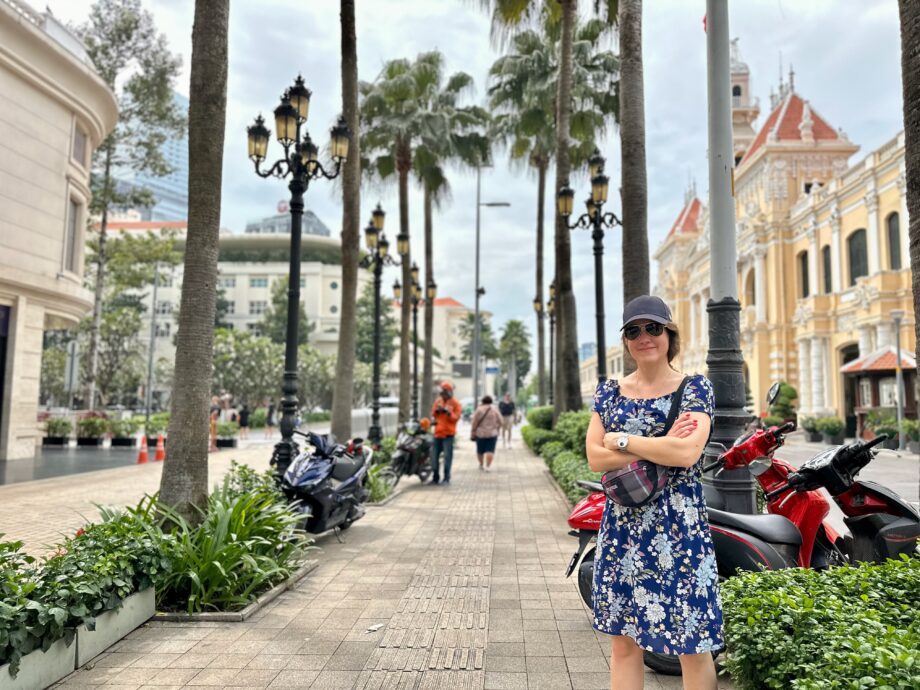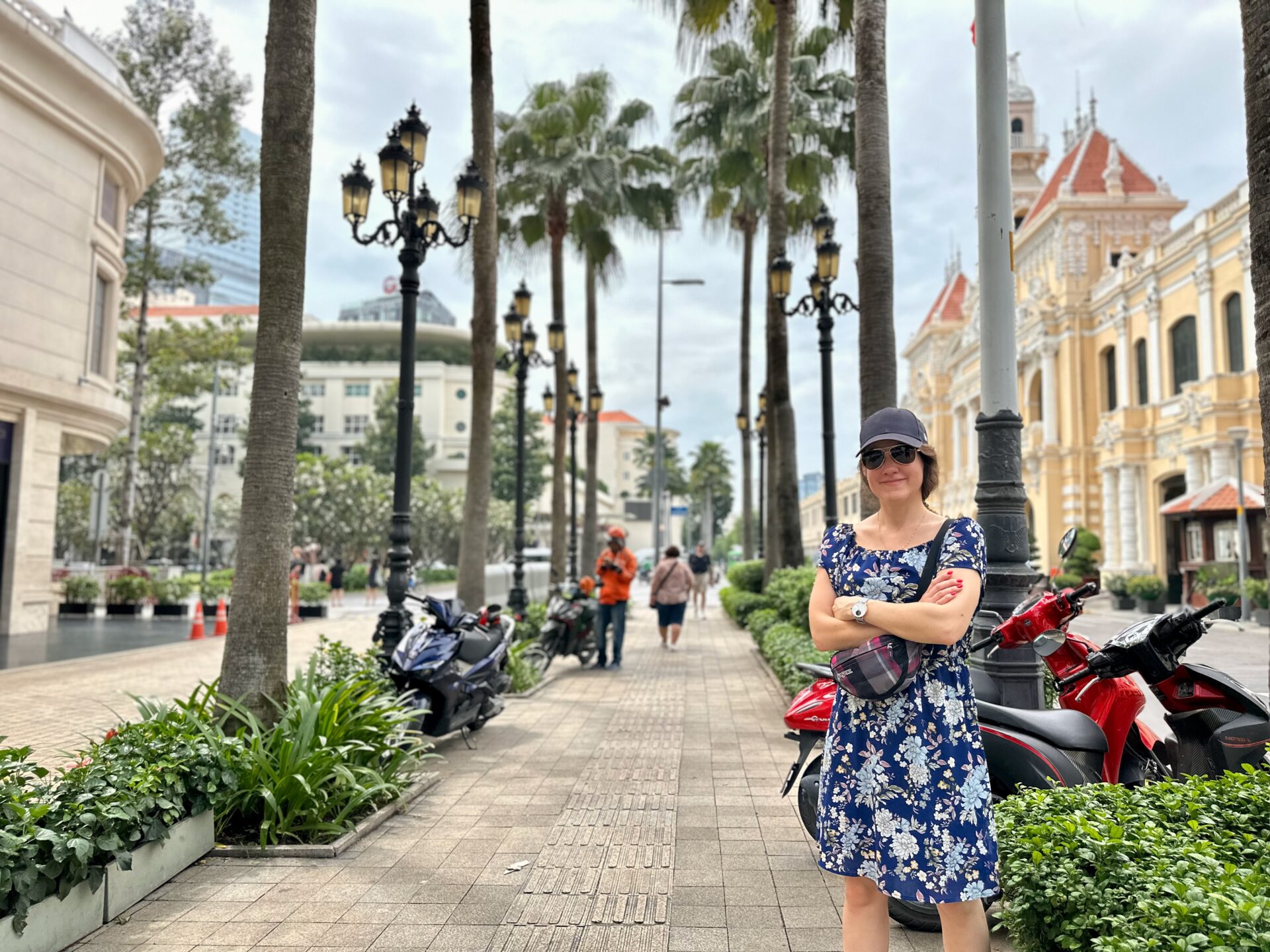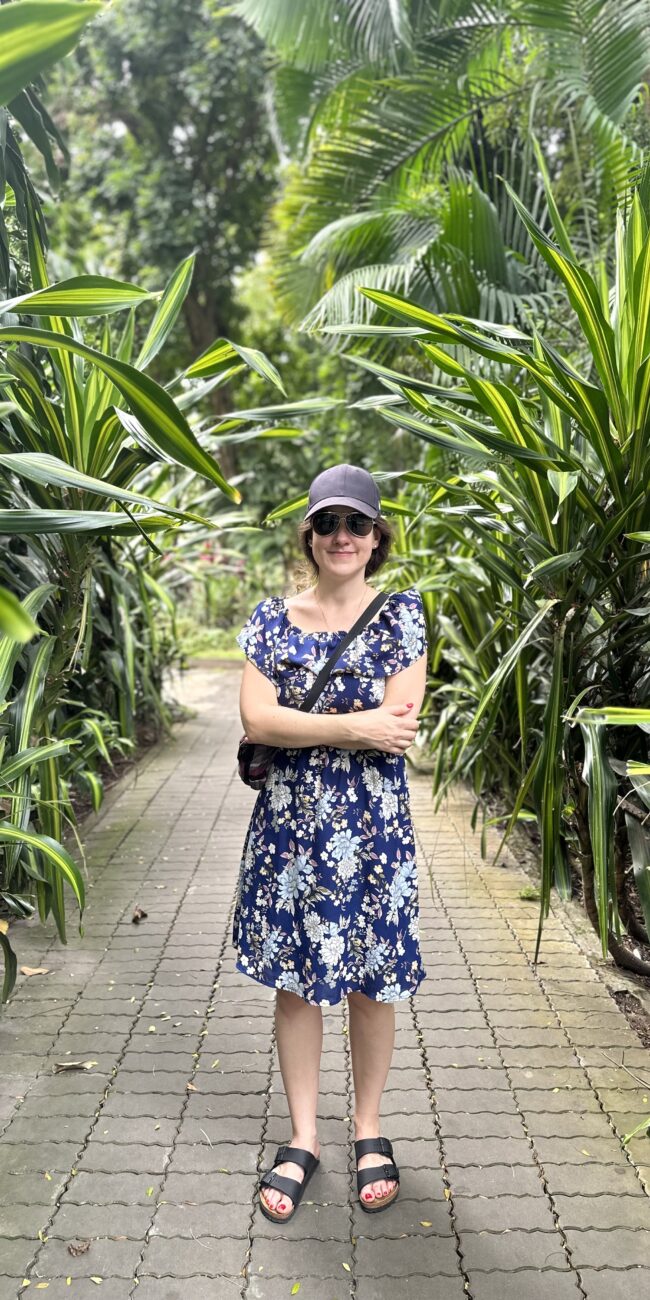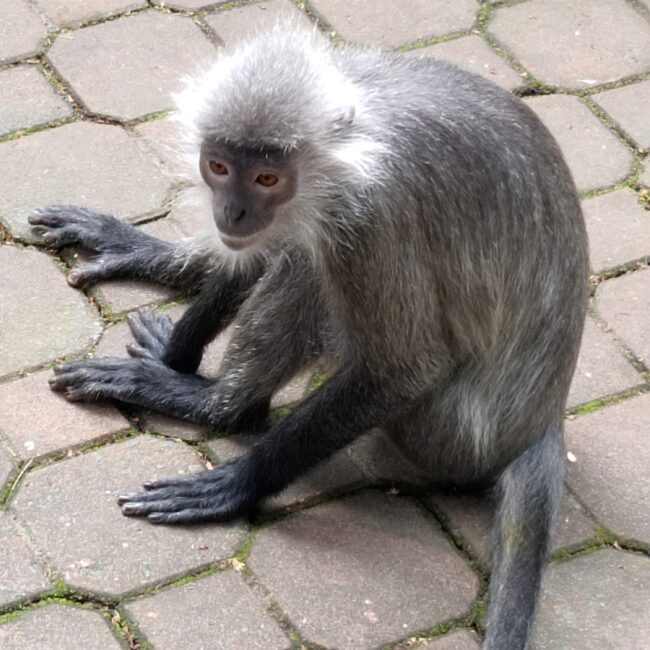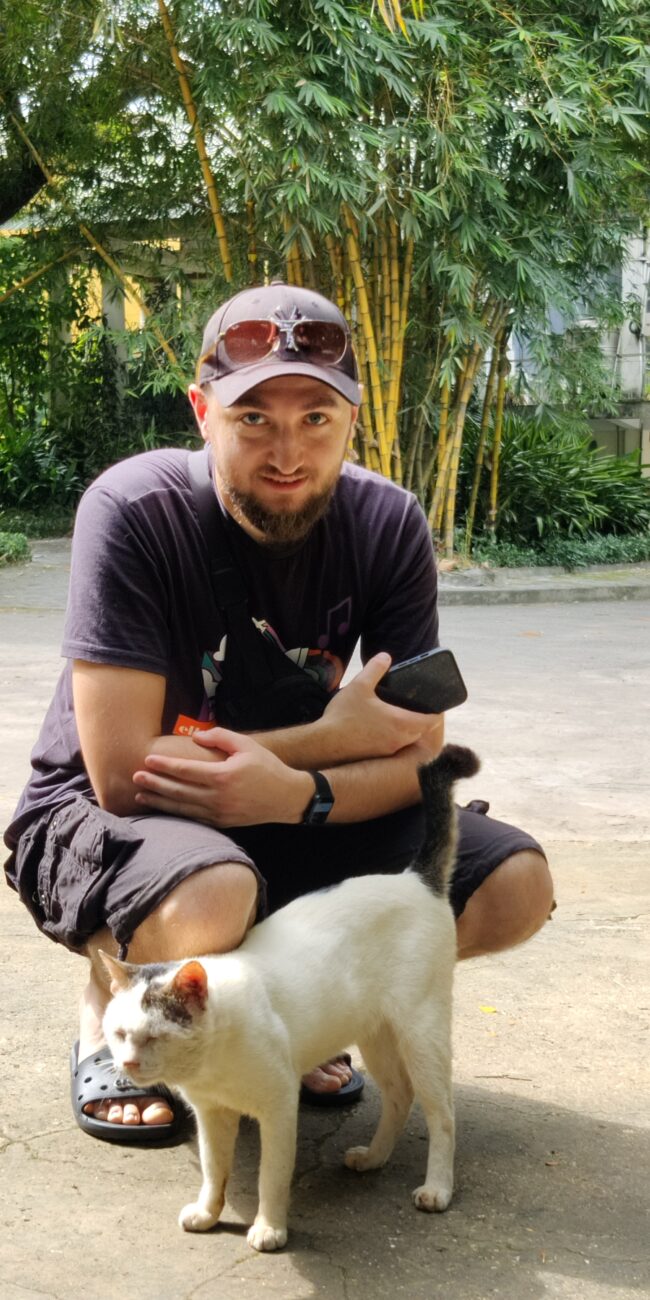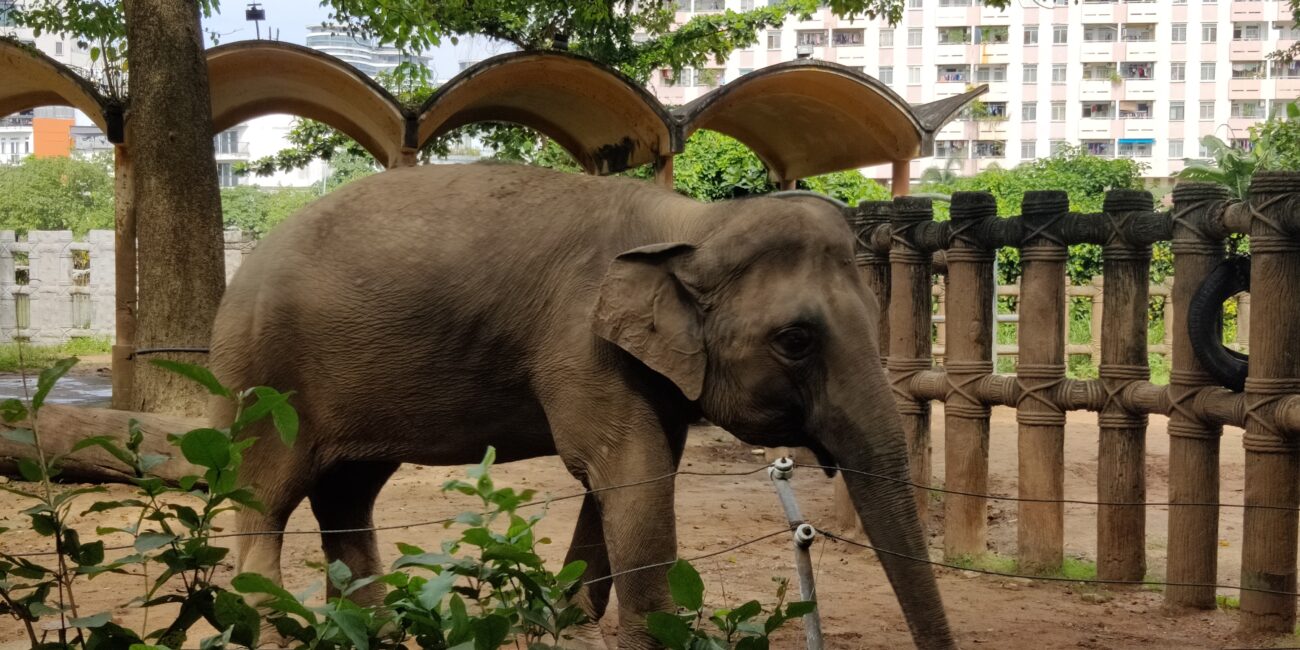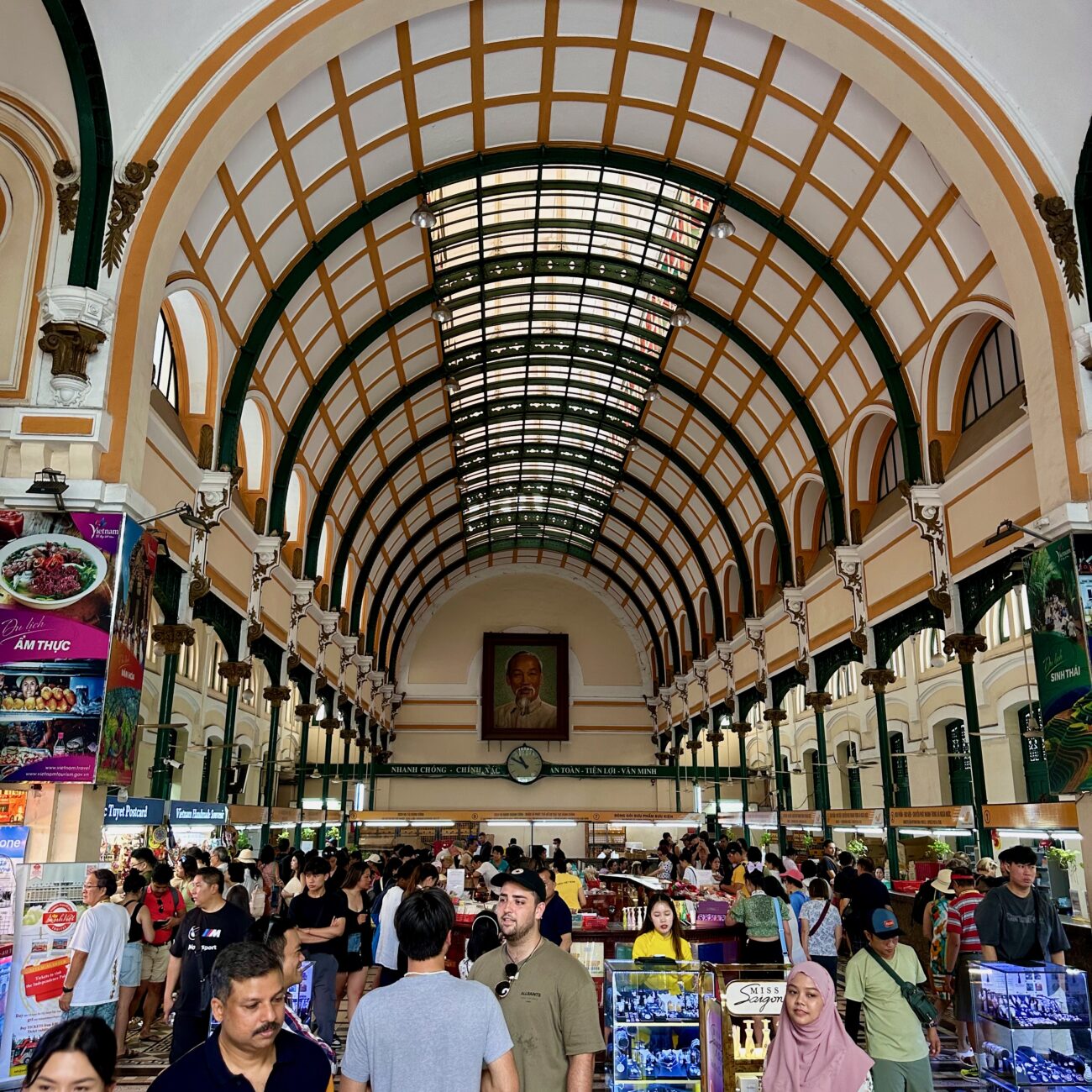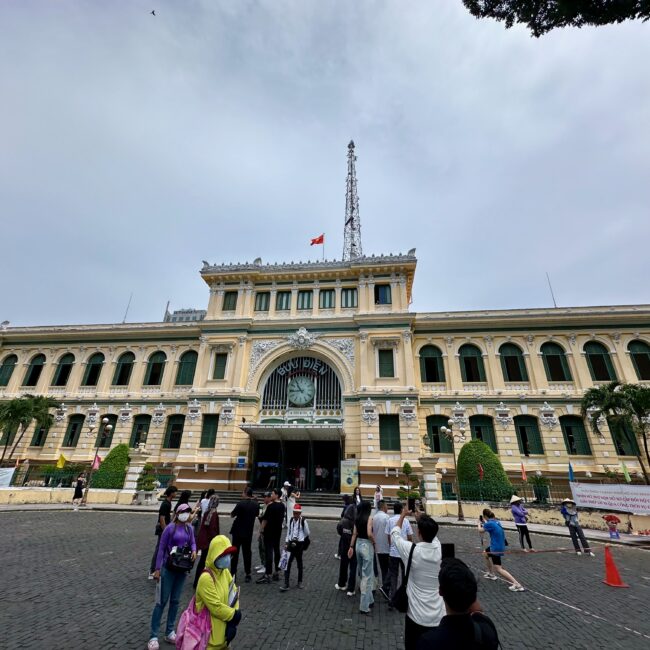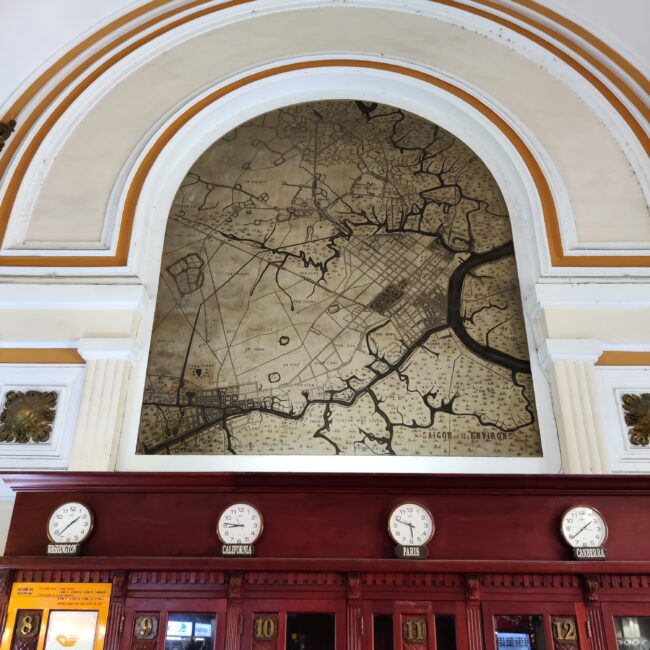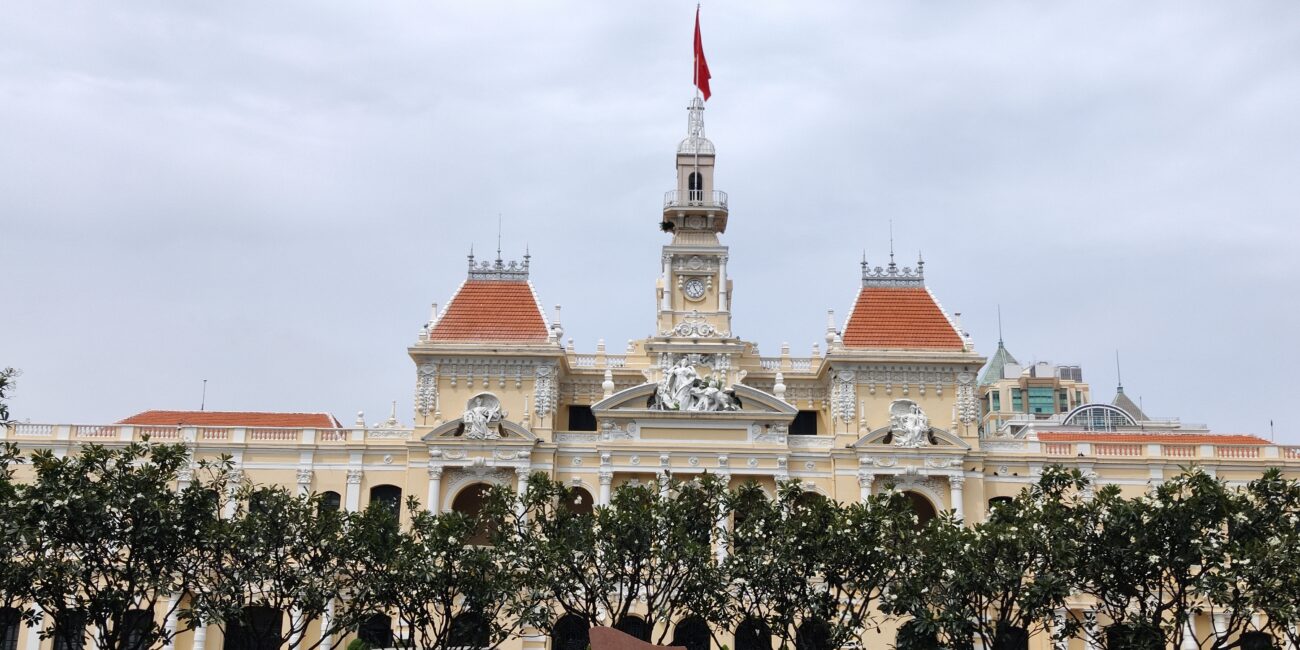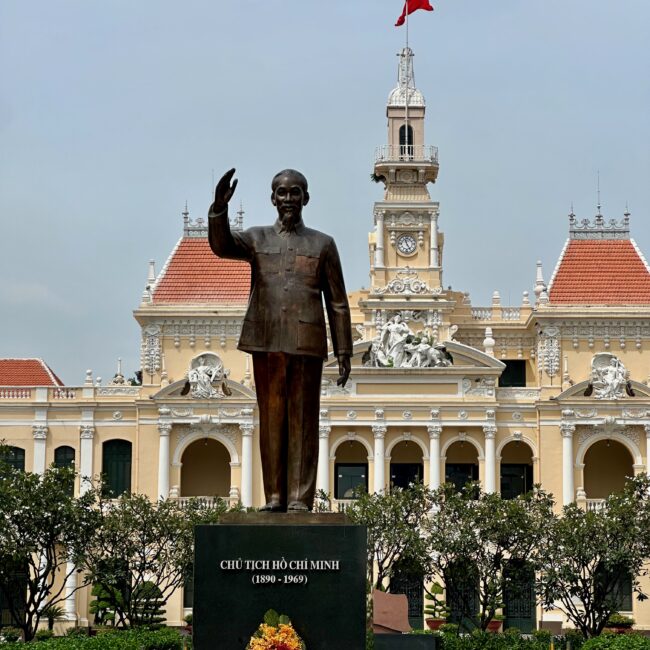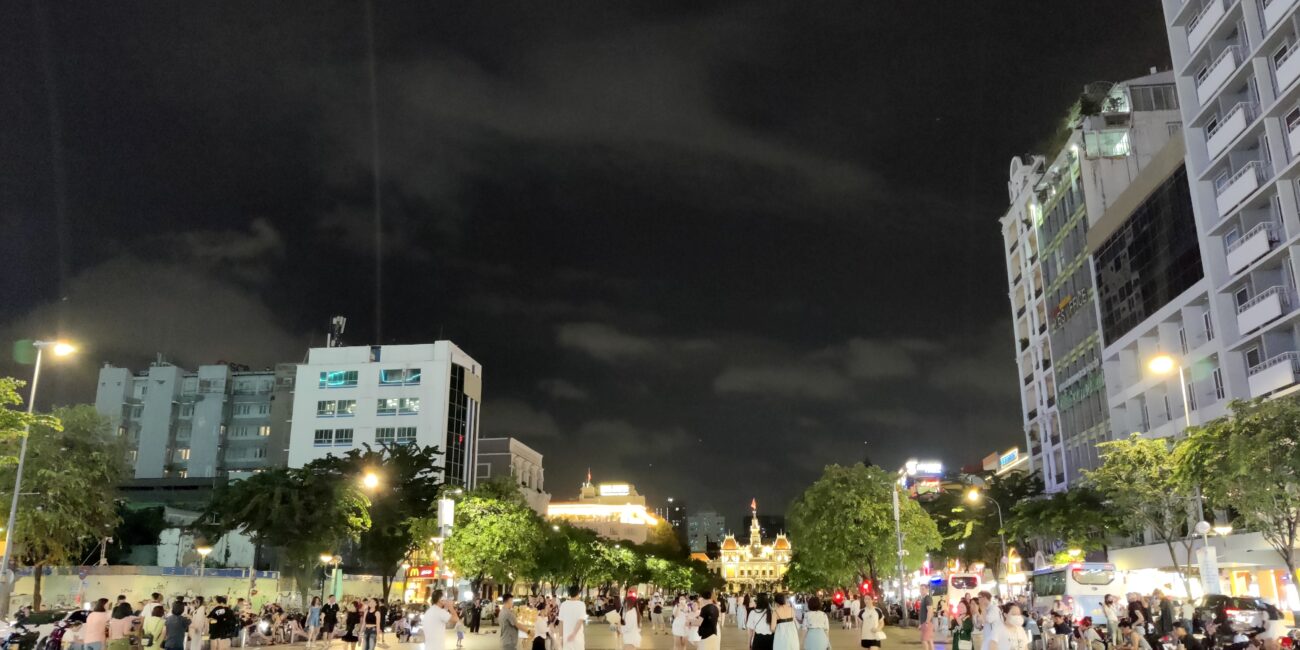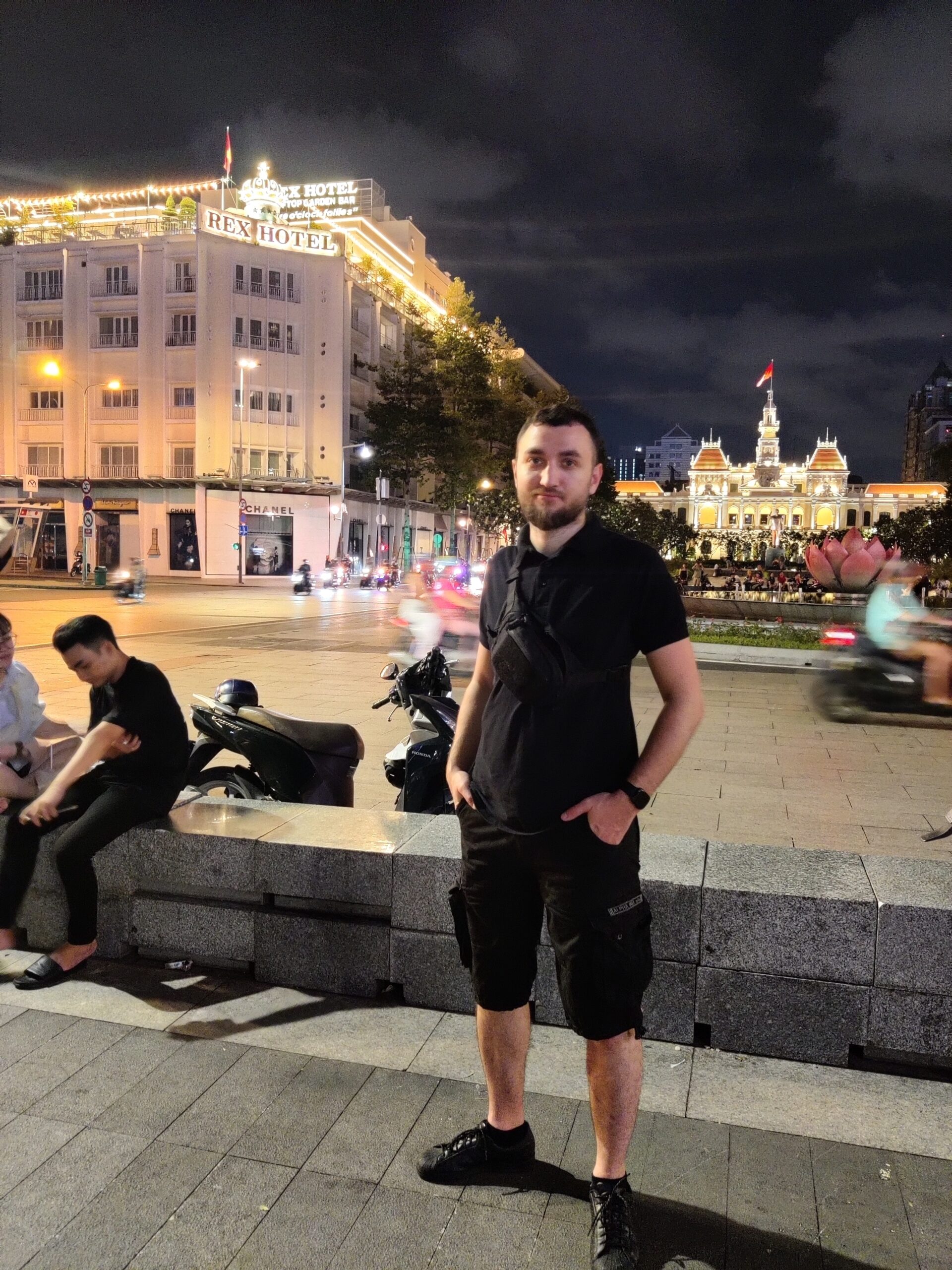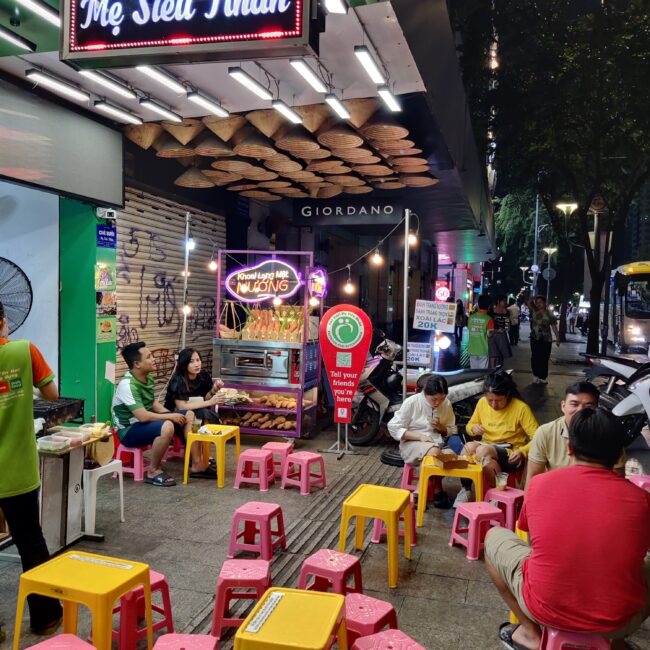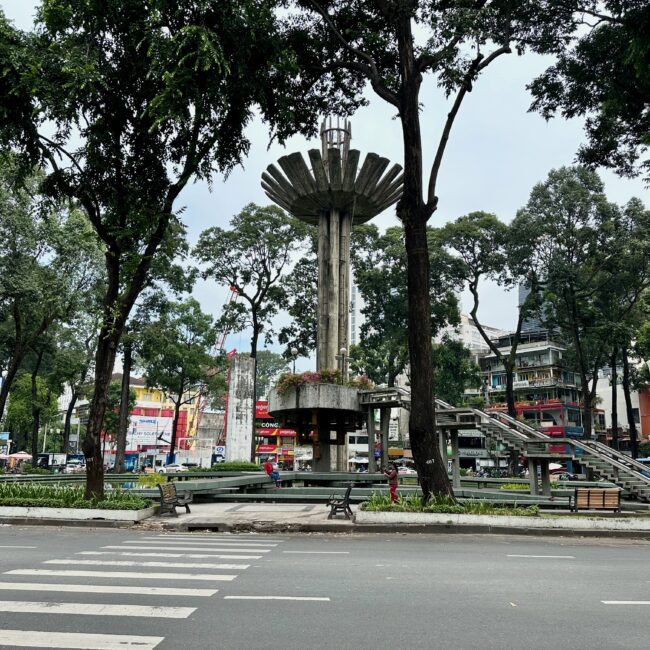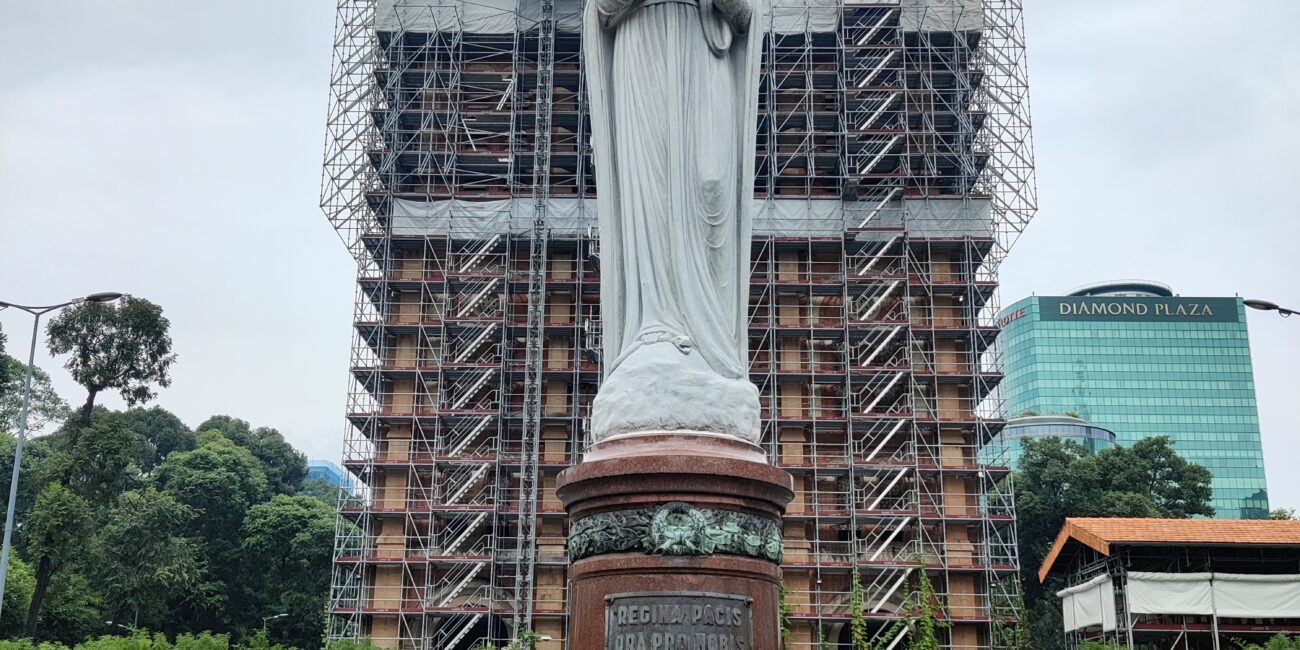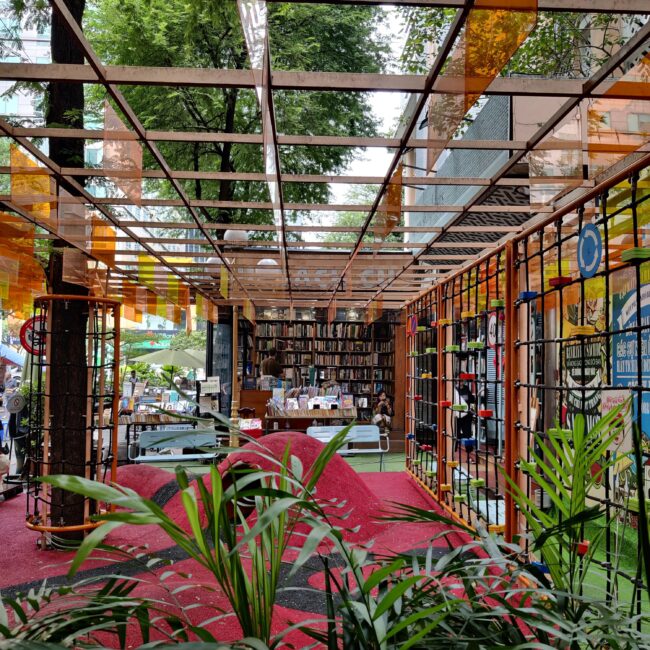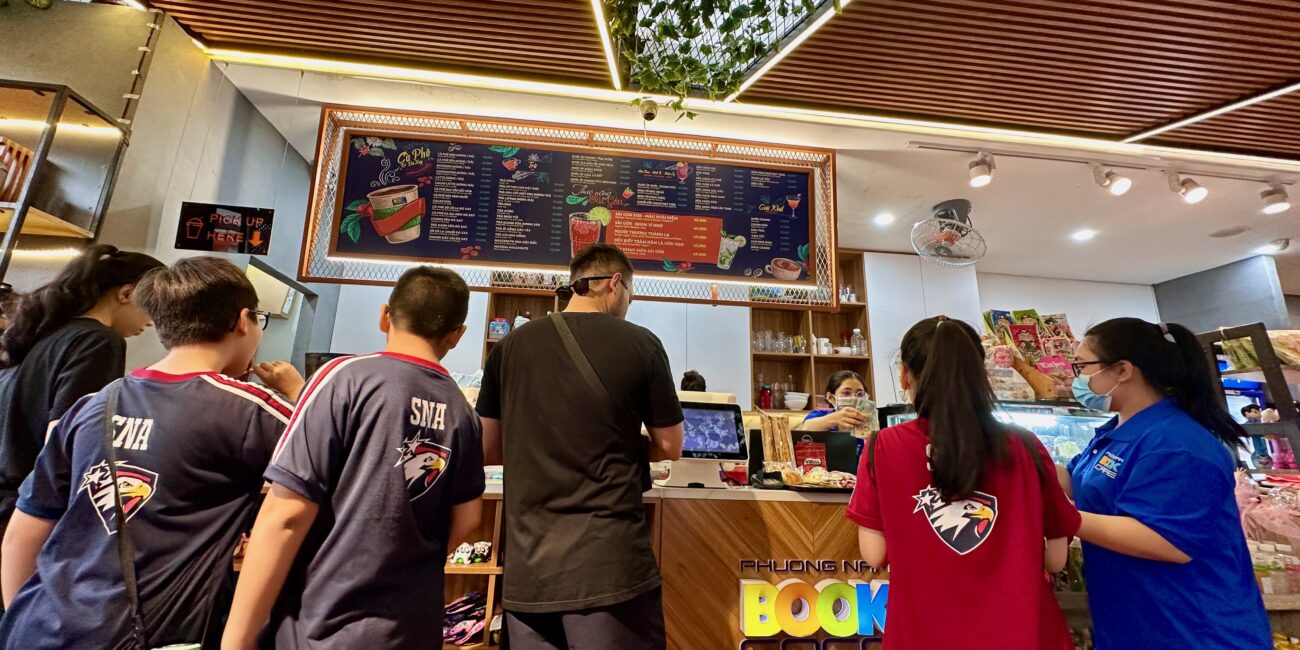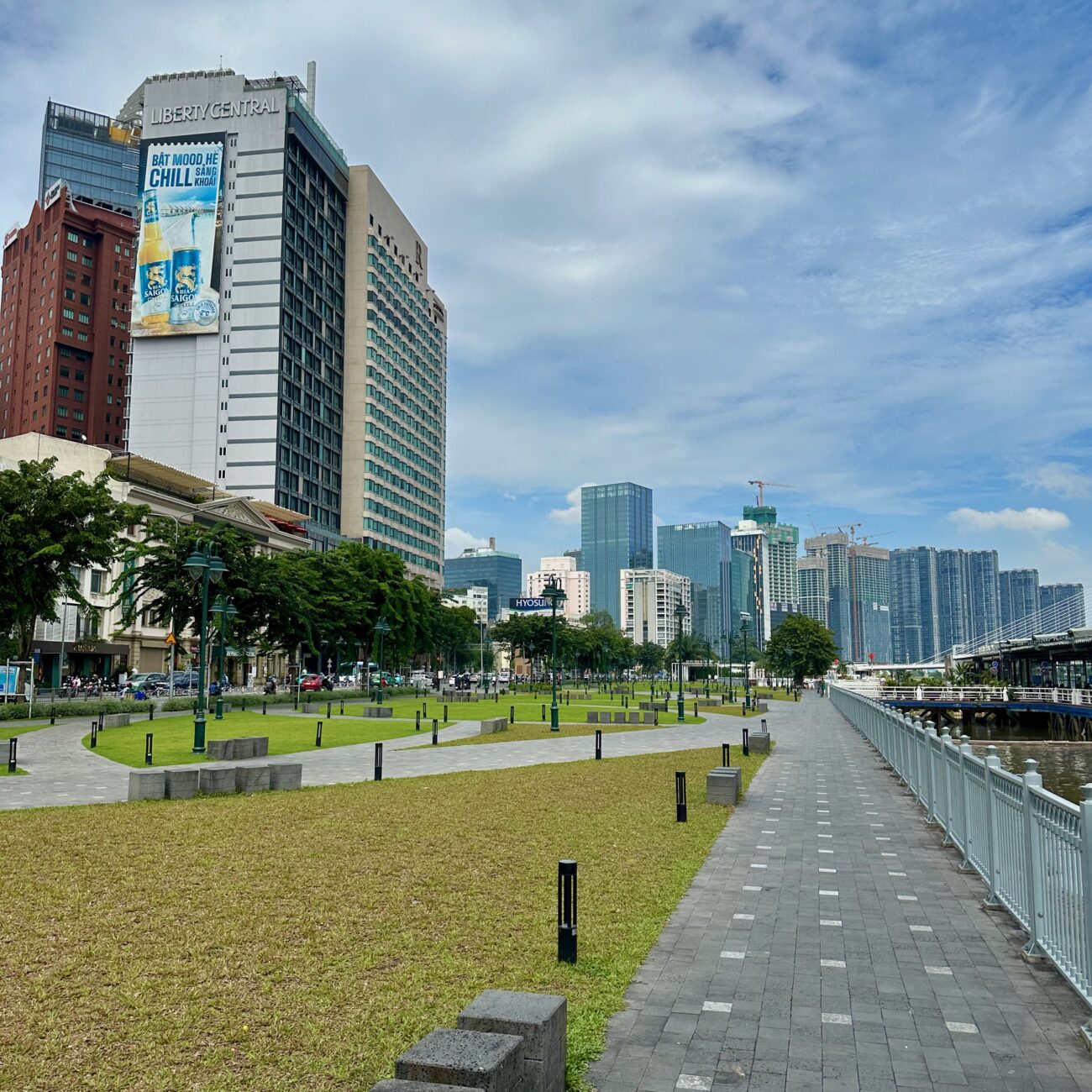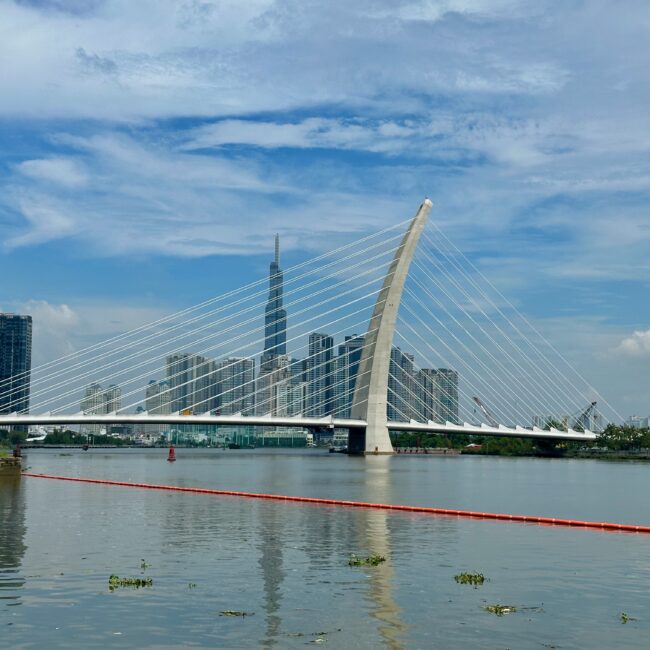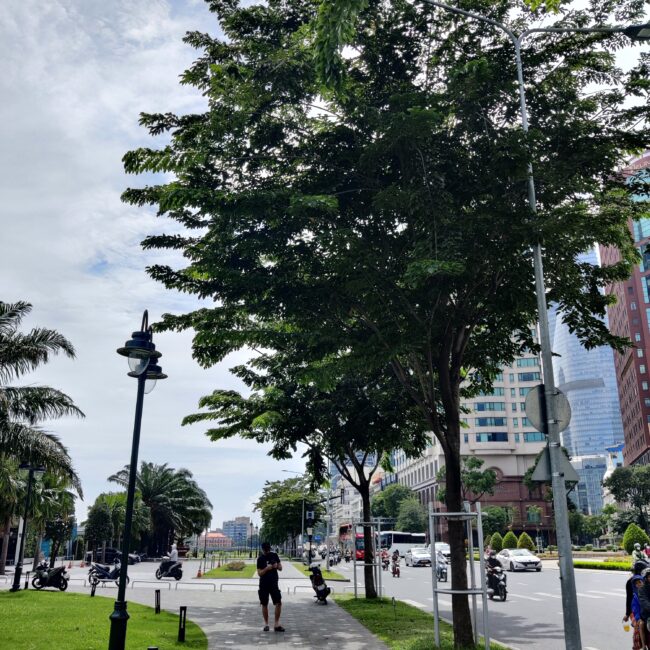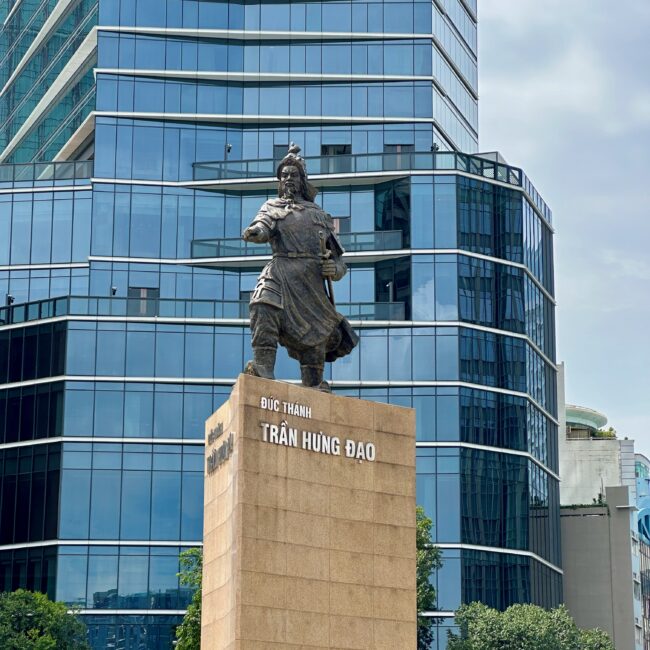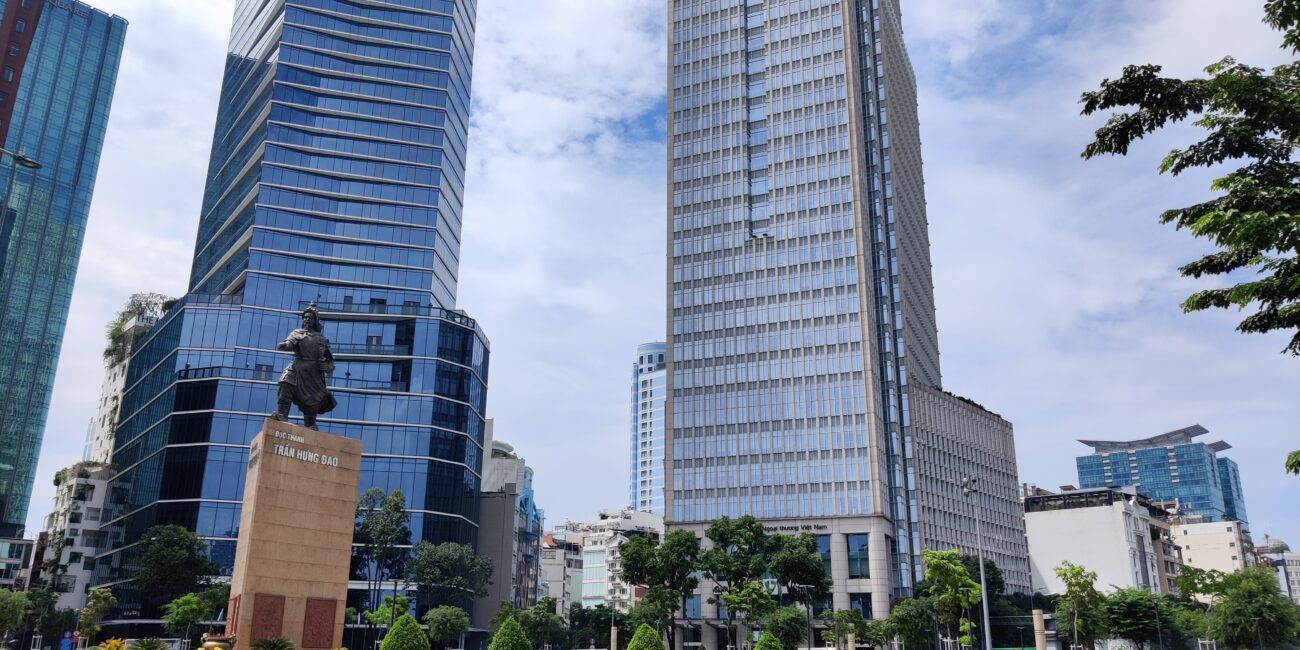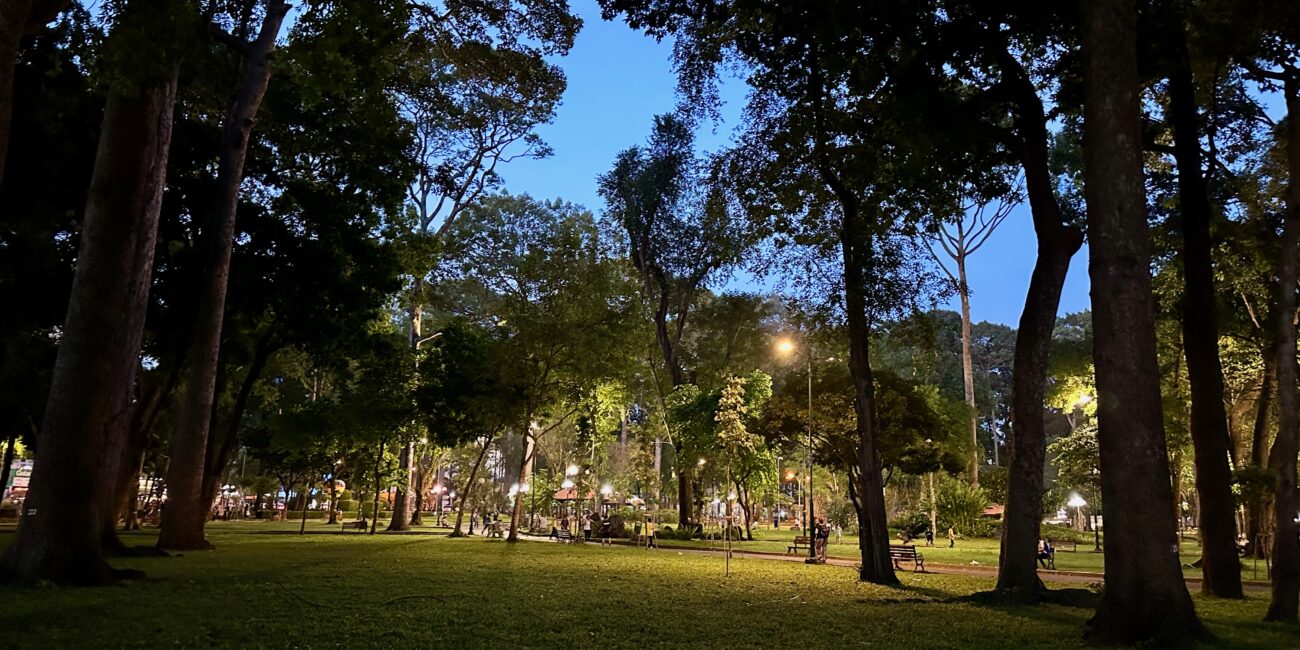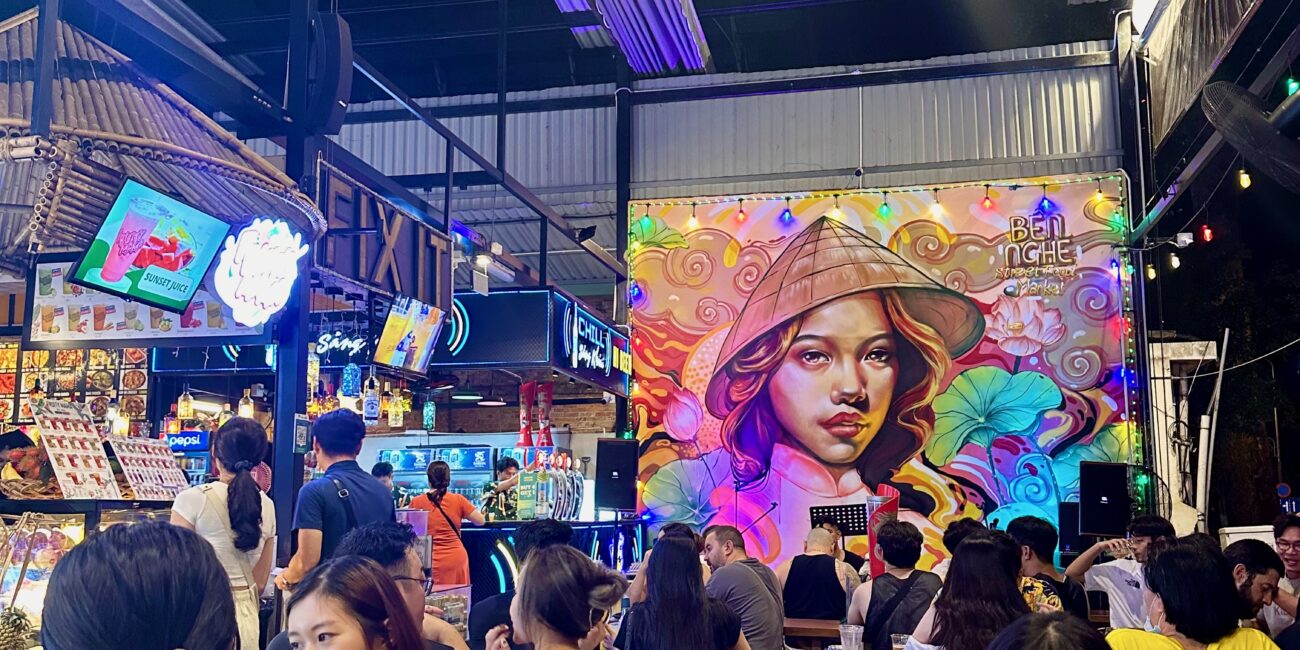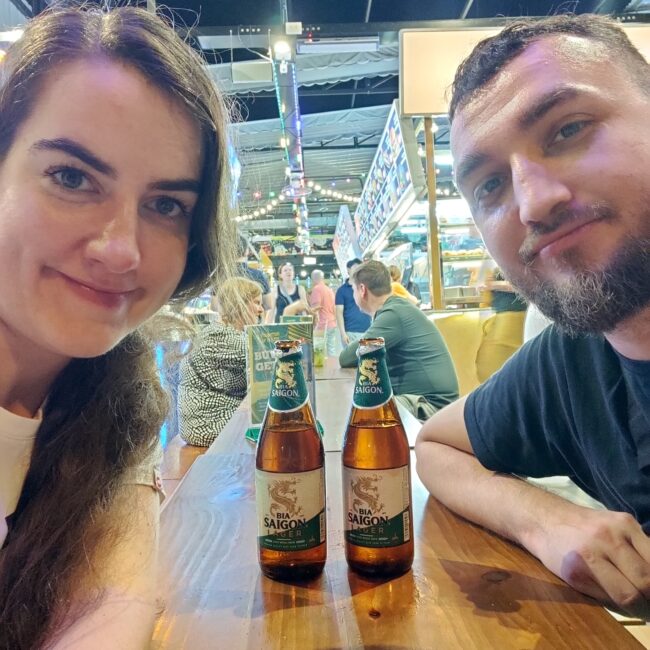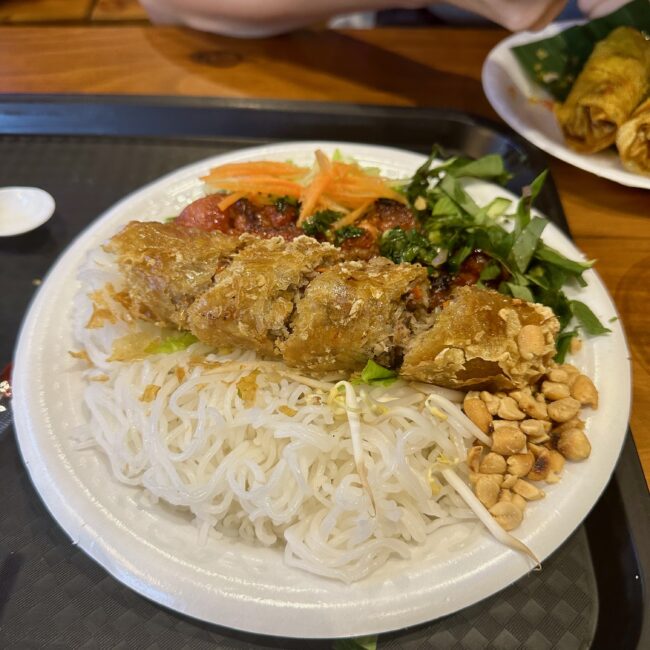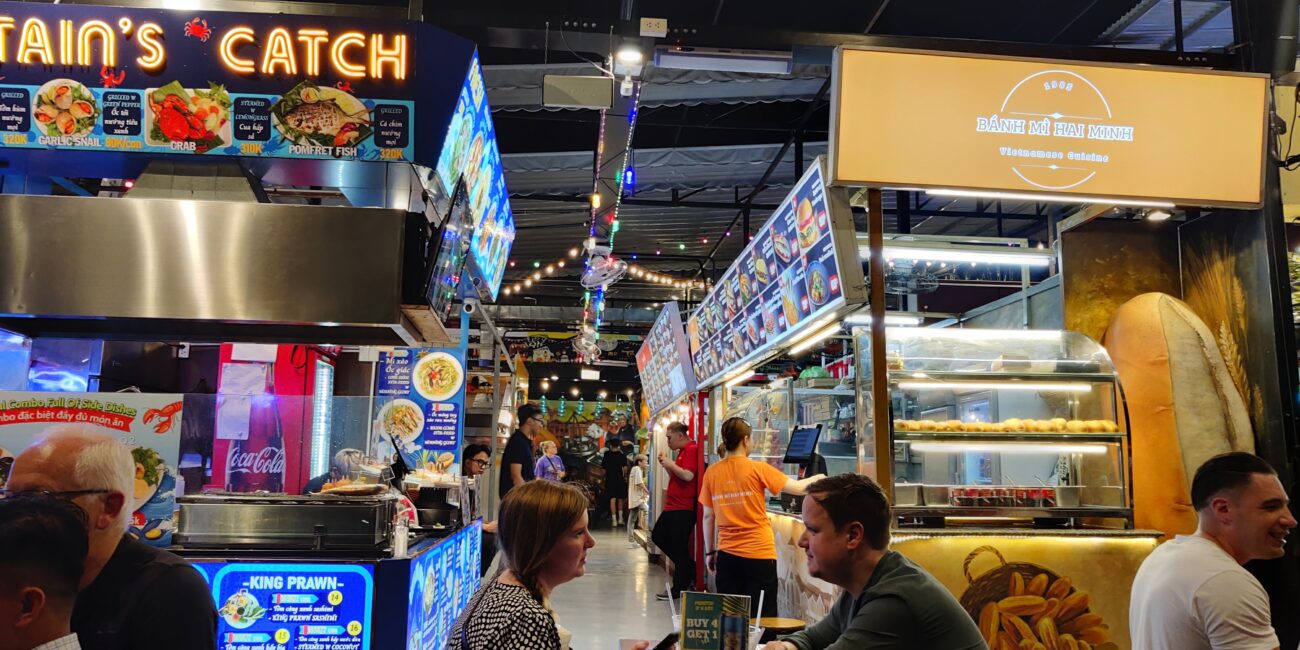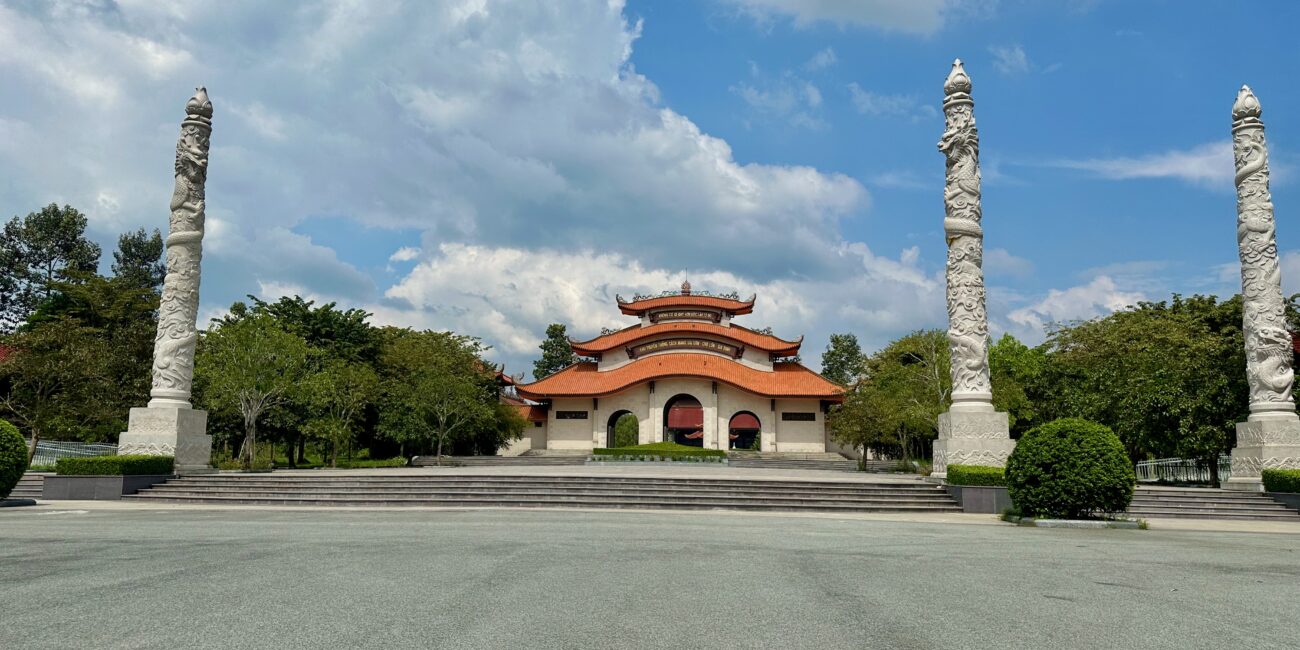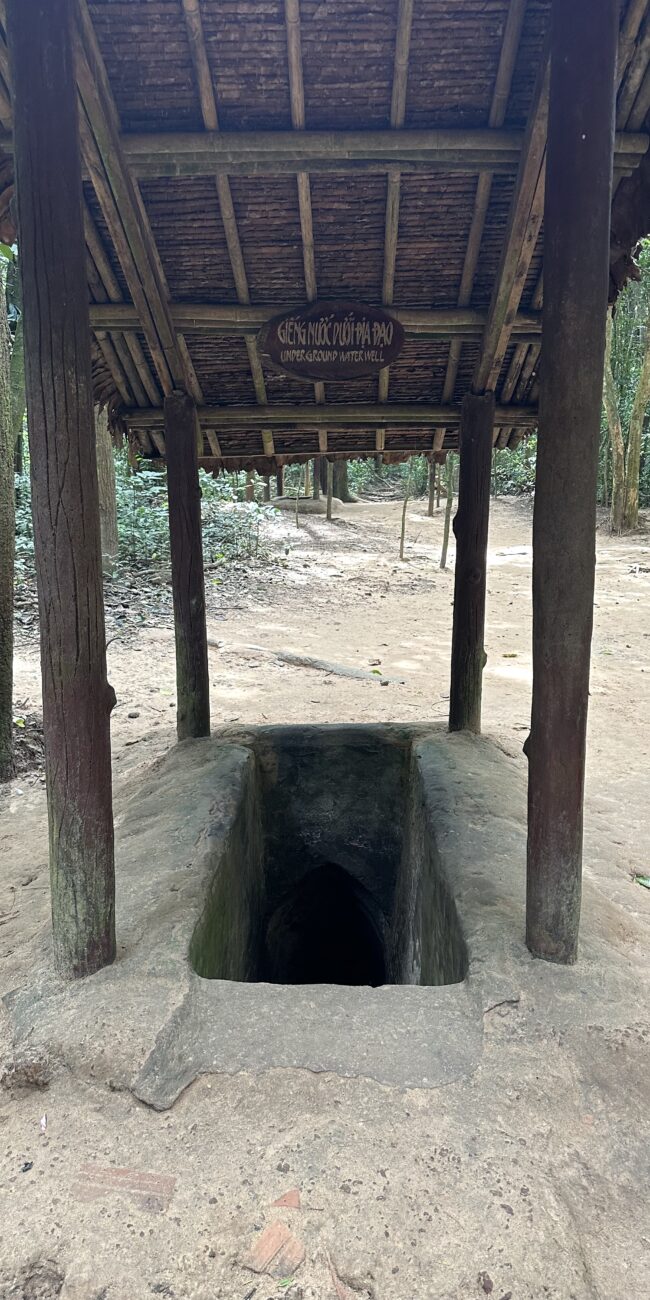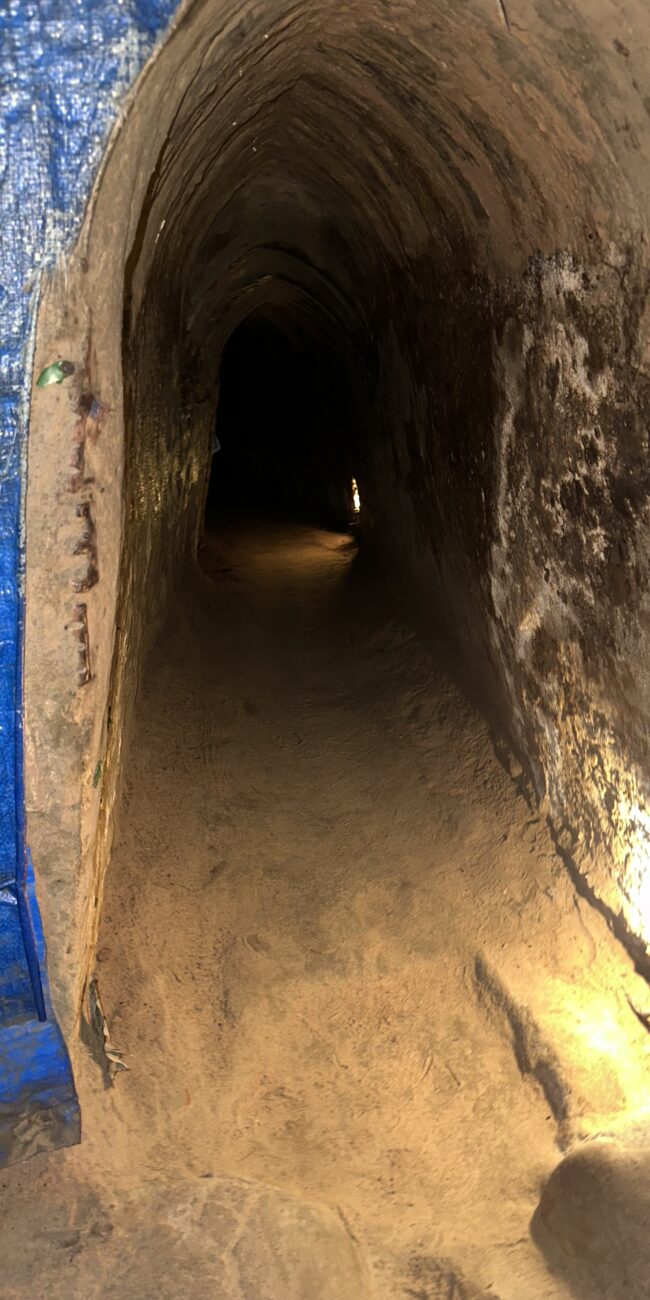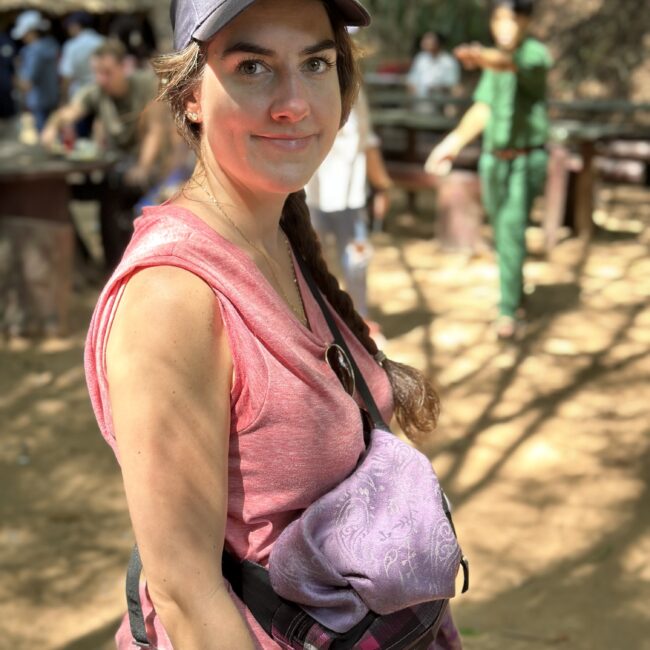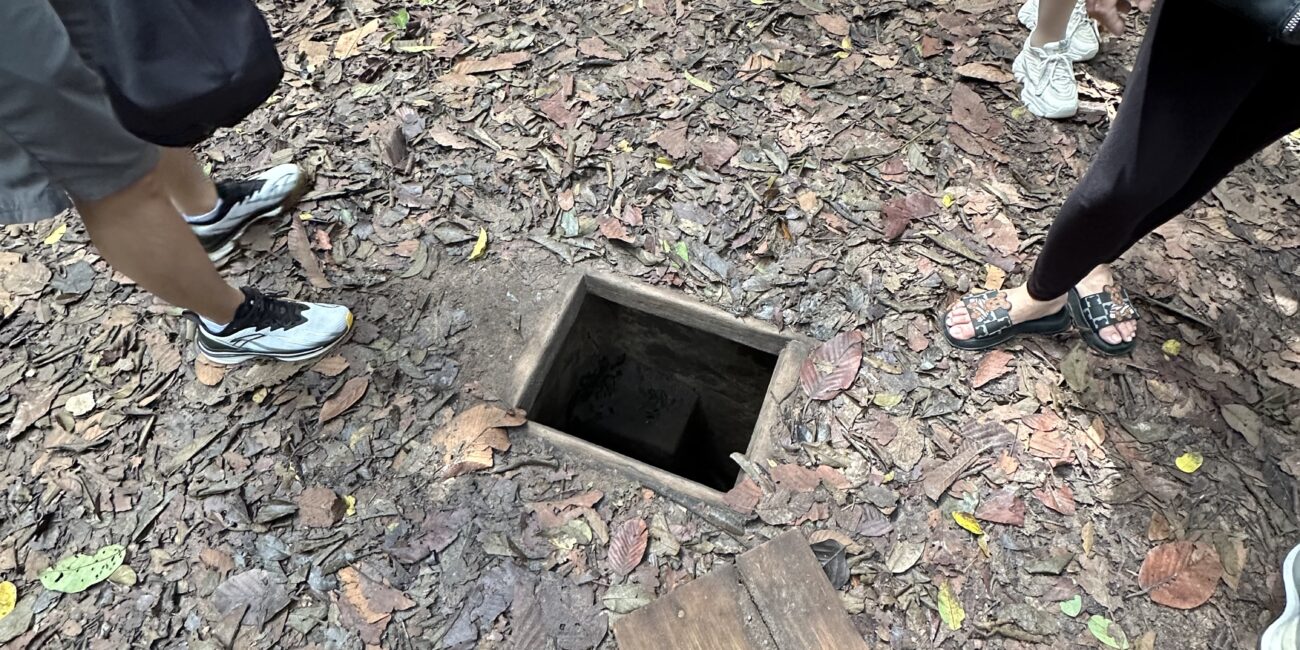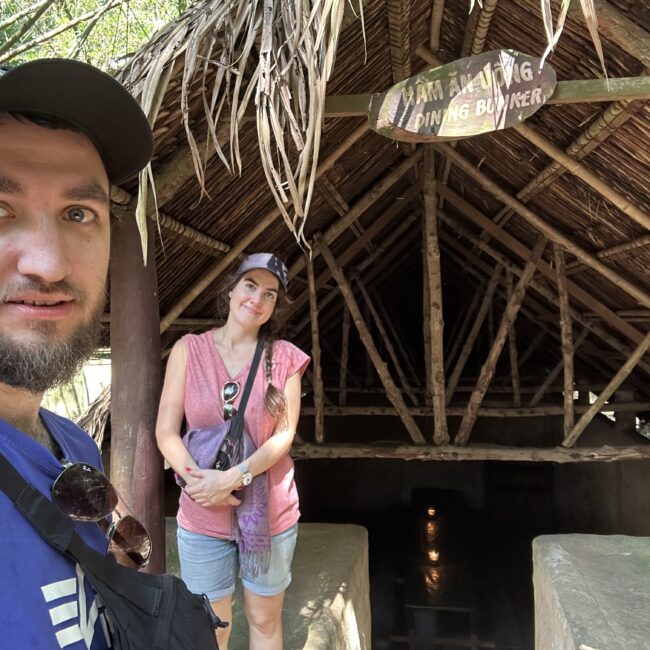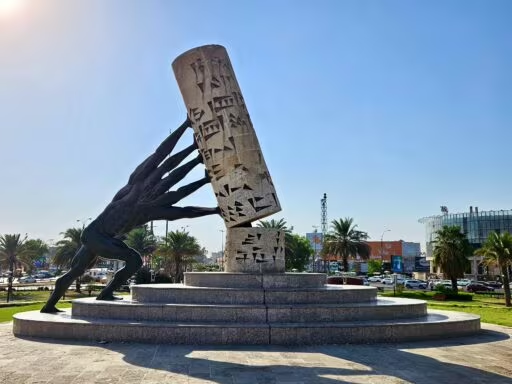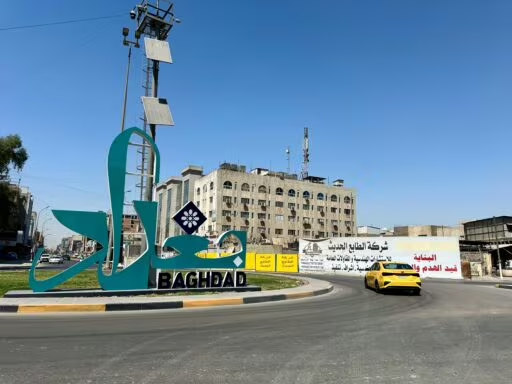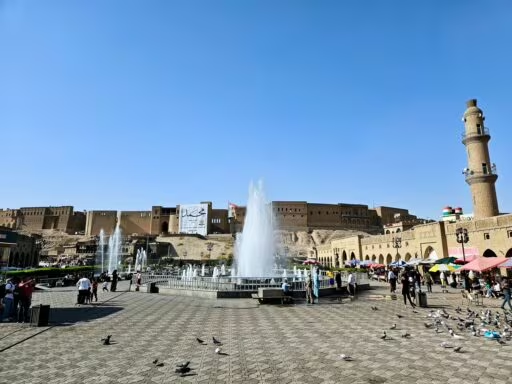This post is also available in:
Polski
Hello! 👋
During our stay in Ho Chi Minh City, we managed to visit several really interesting places. Of course, as it often happens with long-distance trips, not everything went according to plan. We had to skip one day because Jadzia caught a slight fever and was completely out of action. But well – these things happen, and it’s always good to be prepared for them.
Despite a few hiccups, we’ve put together a list of places we managed to visit. If you’re planning your trip to Ho Chi Minh City, you’ll definitely find something here that catches your interest.
And if you haven’t read our article about arriving in Vietnam and our first impressions of the country yet, 👉 make sure to check it out here.
Saigon Zoo & Botanical Garden
viet. Thảo Cầm Viên Sài Gòn
Saigon Zoo & Botanical Garden is one of the oldest zoos in the world, opened in 1865. The facility covers an area of approximately 20 hectares and is home to over 100 animal species as well as a rich collection of plants.
Unfortunately, during our visit, we got the impression that the zoo is somewhat neglected and in need of modernization. Compared to other zoos we’ve visited, this one felt small and less appealing. Similar opinions have been shared by other visitors, pointing out outdated infrastructure and a limited variety of species.
That said, it’s worth appreciating the historical significance of this place and its central location in Ho Chi Minh City, which makes it easily accessible for tourists.
👉 For more information, visit the official website.
Saigon Central Post Office
viet. Bưu điện trung tâm Sài Gòn
The Central Post Office in Ho Chi Minh City is one of the places we visited during our stay in the city. Built between 1886 and 1891, the building is a prime example of French colonial architecture, blending elements of Gothic, Renaissance, and French styles.
From the outside, it immediately catches the eye with its façade featuring a large clock above the main entrance and intricate decorative details. Inside, the building impresses with its high vaulted ceilings, elegant arches, and classic design. The walls are adorned with historical maps depicting old Saigon and the surrounding regions, adding a unique charm to the place.
Although it still operates as a functioning post office, it also serves as a popular tourist attraction. Many visitors take the opportunity to send postcards to their loved ones from here. It’s worth noting that bringing open food or drinks inside is not allowed. Additionally, the building features souvenir stalls where you can purchase local handicrafts and Vietnam-themed gifts.
Ho Chi Minh City People’s Committee
viet. Ủy ban Nhân dân Thành phố Hồ Chí Minh
The Ho Chi Minh City People’s Committee Building, also known as the City Hall, is one of the city’s most iconic landmarks. Located at the end of Nguyễn Huệ Boulevard, on Lê Thánh Tôn Street, it is a prime example of French colonial architecture.
Built between 1898 and 1908, the building was designed by French architect Fernand Gardès. Originally named Hôtel de Ville de Saïgon, it served as the headquarters of the Saigon City Council. After the end of the Vietnam War in 1975, it became the office of the Ho Chi Minh City People’s Committee.
The building’s façade impresses with its Renaissance style and a distinctive clock tower, inspired by European town halls. While the architecture strongly reflects French influences, it also features decorative elements typical of traditional Vietnamese art.
Unfortunately, the interior of the building is not open to visitors, as it serves administrative purposes.
While strolling around the building, it’s worth admiring its well-preserved façade and the surrounding square, which is a popular spot for gatherings and cultural events. In the evenings, the building is beautifully illuminated.
👉 For more information, visit the official website.
Statue of Ho Chi Minh
viet. Tượng Chủ tịch Hồ Chí Minh
The Ho Chi Minh Statue is one of the most recognizable landmarks in Ho Chi Minh City. Located in Nguyễn Huệ Square, in front of the People’s Committee Building, it attracts both tourists and locals. Erected in 2015, the statue stands 7.2 meters tall and is made of bronze.
The statue depicts Ho Chi Minh standing with one hand raised in a gesture of greeting, symbolizing his connection to and care for the nation. It holds significant historical and cultural value and is often visited during national ceremonies and commemorative events.
Nguyễn Huệ Square
viet. Quảng Trường Nguyễn Huệ
Nguyễn Huệ Square is one of the most popular spots in Ho Chi Minh City, located in the heart of District 1. Stretching approximately 670 meters, it extends from the Saigon River to the People’s Committee Building, forming a wide and elegant promenade.
The area is surrounded by both historic colonial-era buildings and modern skyscrapers, perfectly capturing the contrasts of the city. At its northern end stands the statue of Hồ Chí Minh, which serves as a major photo spot for tourists.
In the evenings, especially on weekends, Nguyễn Huệ transforms into a vibrant space filled with street performers, musicians, and strolling families. The area comes alive with neon lights, creating a unique atmosphere perfect for evening walks.
There’s no shortage of dining options here – from local snack stalls to upscale restaurants and cafés. Nguyễn Huệ is a great spot to take a break while exploring the city, offering both relaxation and a chance to observe urban life.
Turtle Lake
viet. Hồ Con Rùa
Hồ Con Rùa, also known as Turtle Lake, is a distinctive landmark in Ho Chi Minh City, located at the intersection of Võ Văn Tần, Phạm Ngọc Thạch, and Trần Cao Vân streets in District 3.
The name “Hồ Con Rùa” comes from a turtle sculpture that once stood at the center of the fountain. Designed in the 1960s by architect Nguyễn Kỳ, the site has since become a popular meeting point for both locals and tourists.
Surrounding the lake, there are numerous food stalls and eateries. While the area has its charm, we did notice signs of neglect and the passage of time. Some parts of the infrastructure seem to need renovation, and the surroundings could benefit from better upkeep.
Notre Dame Cathedral of Saigon
viet. Nhà thờ Đức Bà Sài Gòn
The Notre-Dame Cathedral of Saigon, also known as the Basilica of Our Lady of the Immaculate Conception, is one of the most iconic landmarks in Ho Chi Minh City. Unfortunately, during our visit in November 2023, the site was undergoing extensive renovation work, which began in 2017 and is expected to continue until 2027.
The renovation work includes repairs to the roof, windows, flooring, and the wooden structure of the cathedral. Initially, the project was scheduled for completion in 2020. However, due to the COVID-19 pandemic and delays in material shipments from Europe, the timeline was first pushed to 2023 and later extended to 2027.
Due to the renovation work, the area around the cathedral is fenced off, and access to the interior for tourists is limited. Despite this, the cathedral continues to serve religious functions, with masses held according to schedule. For visitors, this means that exploring the interior is largely restricted, and the surrounding scaffolding and fences may affect the building’s visual appeal.
Ho Chi Minh City Book Street
viet. Đường Sách TP. Hồ Chí Minh
Book Street in Ho Chi Minh City is a charming spot in the heart of the city that attracts book lovers and those seeking a peaceful stroll. Located near the Notre-Dame Cathedral and the Independence Palace, this street offers not only a rich selection of books but also cozy cafés where visitors can relax with their favorite reads.
During our visit, we were pleasantly surprised by the atmosphere of this place. Strolling among numerous book stalls, we came across many interesting titles, both in Vietnamese and English. An added bonus was the cafés—perfect spots for a moment of relaxation after a day of exploring the city.
There is also a Starbucks nearby, where we traditionally purchased souvenir mugs for our collection.
Bach Dang Quay Park
viet. Công viên Bến Bạch Đằng
Công viên Bến Bạch Đằng, located in the heart of Ho Chi Minh City, is a popular spot for riverside walks along the Sài Gòn River. The park offers scenic views of the river and the city skyline, while its well-maintained green spaces invite visitors to relax. However, we did notice that the water near the embankment was somewhat polluted, and in certain areas, there was an unpleasant odor. Despite these drawbacks, the park itself is clean, and the view of the city’s main thoroughfare adds to its charm.
Tran Hung Dao Statue
viet. Tượng Đức Thánh Trần Hưng Đạo
During our stay in Ho Chi Minh City, we came across the statue of Trần Hưng Đạo, located at Mê Linh Square in the city center. Trần Hưng Đạo was a prominent Vietnamese general from the 13th century, renowned for repelling three Mongol invasions, which cemented his status as a national hero of Vietnam.
The statue itself is impressive—crafted from bronze, it stands over 10 meters tall and is mounted on a 6.5-meter-high pedestal, giving it a majestic appearance.
The area surrounding the statue is well-maintained, featuring green lawns and a fountain, which, unfortunately, was not operational during our visit.
Tao Dan Park
viet. Công viên Tao Đàn
Công viên Tao Đàn is a green oasis in the heart of Ho Chi Minh City, providing locals and tourists with a space for relaxation and recreation. Covering an area of approximately 10 hectares, it is home to over 1,000 trees, making it one of the largest and oldest parks in the city.
During the day, the park buzzes with activity—people strolling, jogging, or practicing tai chi. However, the atmosphere shifts in the evening. During our nighttime walk, we noticed the presence of rats, which was quite an unpleasant experience. Unfortunately, the presence of these rodents in urban parks is not uncommon, especially in tropical climates.
Ben Nghe Street Food
Ben Nghe Street Food Market is a bustling spot in the heart of Ho Chi Minh City, perfect for food lovers seeking diverse flavors. With over 30 stalls offering Vietnamese dishes and specialties from around the world, there’s something for everyone. The lively atmosphere is enhanced by live music performances, making it a great place to enjoy a meal and soak up the local vibe.
Most of the stalls accept card payments, but it’s always a good idea to carry some cash just in case.
The busiest time is after 5:00 PM when the market comes alive with energy and vibrant activity. For those who prefer a quieter atmosphere, visiting earlier in the day is a better option.
Củ Chi Tunnels
viet. Khu di tích lịch sử Địa đạo Củ Chi
Tunele Củ Chi are one of those places that leave a lasting impression from the very first moment. Located about 60 kilometers northwest of Ho Chi Minh City, they offer a fascinating glimpse into Vietnam’s turbulent history. Initially developed during the war with the French, the tunnels gained their full significance during the Vietnam War. This is where the Viet Cong built an underground city that helped them survive bombings and wage guerrilla warfare effectively.
On-site, you can literally step underground and experience firsthand the conditions soldiers lived in. I’ll admit—when it came to entering the tunnels, I panicked a little. They’re narrow, cramped, and at times downright claustrophobic. Jadzia, on the other hand, navigated them without much trouble, which only highlighted how incredibly resilient those who used these tunnels daily had to be.
Not only the tunnels
Beyond the tunnels themselves, the complex offers several other attractions that help visitors better understand the realities of that era. You can explore reconstructed camps, sample local dishes that were eaten by the guerrillas. Also take a closer look at the traps set for enemies—the ingenuity of the Vietnamese truly stands out here.
For those seeking a bit more adrenaline, there’s also a shooting range where you can fire historic weapons like the AK-47 or M16. It’s an exciting addition, but keep in mind that gunfire echoes almost constantly, which might feel overwhelming for visitors sensitive to loud noises.
It’s definitely worth visiting, even just to gain a deeper appreciation for the effort and determination it took for the Vietnamese to survive such a challenging period. However, if you suffer from claustrophobia or feel uneasy in tight spaces, the tunnels might not be for you. In that case, you can focus on the above-ground parts of the complex—there’s still plenty to see!
👉 For more information, visit the official website.
Summary and invitation to the next part of the expedition
Ho Chi Minh City definitely left us with mixed feelings—on one hand, it captivates with its unique atmosphere, but on the other, it’s clear that time has taken its toll on many attractions. Some spots are practically begging for more care and restoration. You can tell that parts of the city have been renovated somewhat hastily, while others seem to have been left entirely to their fate.
It’s also worth being upfront—Ho Chi Minh City isn’t the easiest destination for people with limited mobility. High curbs, a lack of ramps, and sidewalks that are often blocked or simply non-existent can pose significant challenges. On many streets, scooters dominate the space, and pedestrian-friendly areas feel more like an exception than the rule.
Despite these minor inconveniences, we were genuinely happy with what we managed to see. The weather was on our side, making sightseeing quite enjoyable. Who knows—maybe we’ll come back someday to check off the places we missed. And next time, we’ll definitely be more prepared for… the rats. 😂
Meanwhile, our adventure in Vietnam continues. It’s time to hit the road and head to our next destination! The bus is ready, so we’re hopping on and setting off for Da Lat. 🚍 🌄 If you’re curious about what awaited us in this picturesque city, make sure to check out the next part of our journey 👉 click here.

